
The Pros
- Great design
- Health, sleep and wellness tracking
- Decent battery life
The Cons
- No built-in GPS
- Touch navigation is inconsistent
- Tiny display
Fitbit’s latest fitness tracker, the Fitbit Luxe, offers a new and unique take on the company’s long-running line of trackers. The Luxe is largely a departure from previous trackers when it comes to style and design. However, Fitbit adopted a new look while maintaining many of the popular tracking features people love.
The Luxe sits nicely between Fitbit’s Inspire 2 and Charge 4 trackers in terms of features and design. It’s closer to the Charge in features, while offering a more stylish rendition of the Inspire 2’s size and shape.
Having spent almost a week with the Fitbit Luxe, I’m generally impressed with it so far. It feels great on my wrist (it’s so light, I find myself forgetting it’s even there), looks great and offers all the tracking tools I need.
Granted, I’m probably much closer to the average user here — I like using fitness trackers to monitor my activity throughout the day and get a picture of how my sleep is each night. The more die-hard fitness freaks among us may miss a few features here and there. But for those who want the basics in a pretty package, the Luxe is a great option.
Doing (almost) everything in style
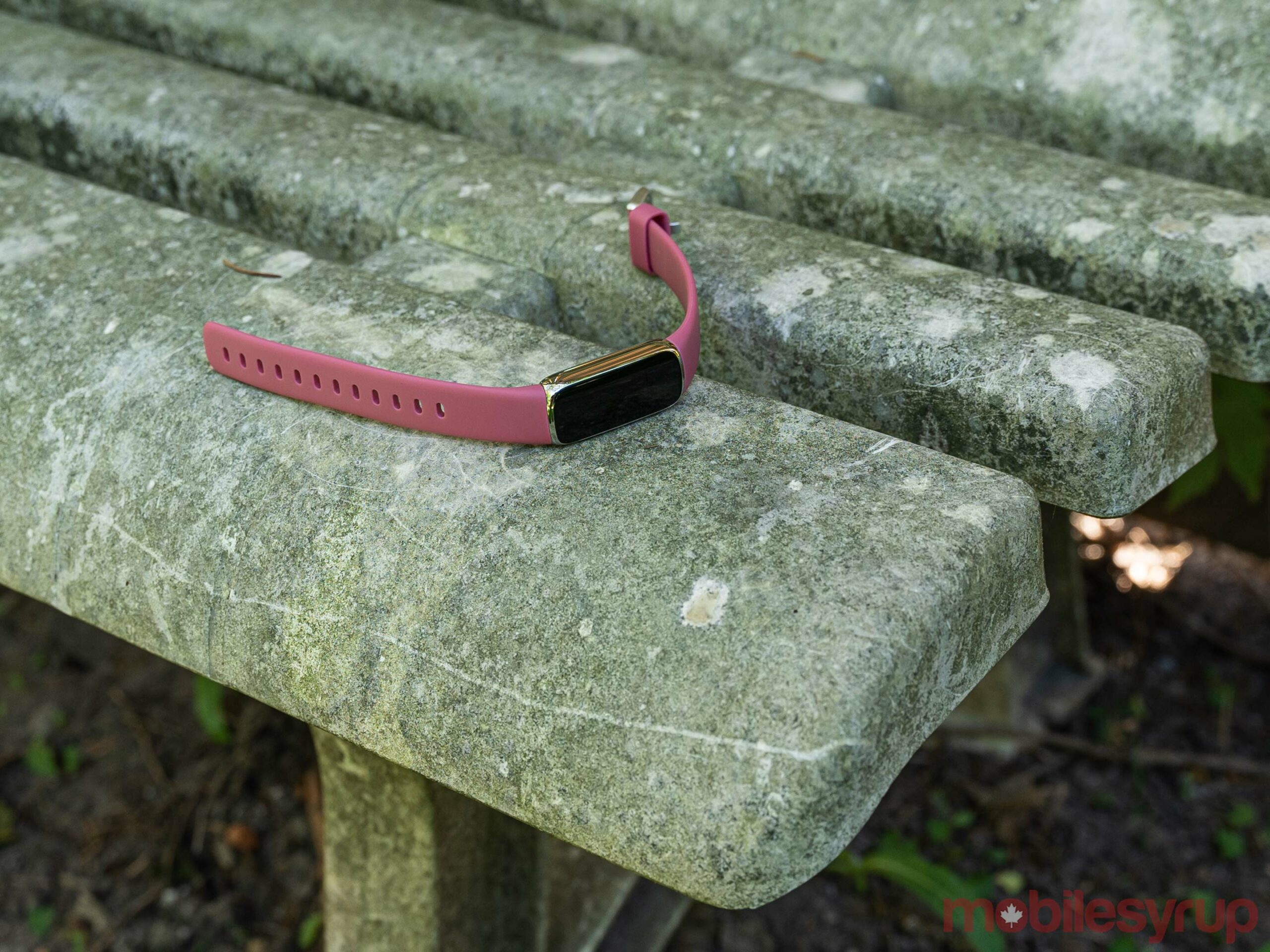
Let’s kick things off with a quick overview of what the Fitbit Luxe can do. Like many Fitbit products, the Luxe tracks 24/7 heart rate, SpO2 (blood oxygen) saturation levels, activity throughout the day (exercises, steps, etc.), swim tracking, menstrual health tracking and your sleep.
To expand on that, sleep tracking covers sleep stages (amount of light, deep and REM sleep) as well as ‘Sleep Score,’ which assigns a numerical score to each night’s sleep so Fitbit users can get an at-a-glance picture of their sleep. The Luxe can also measure various ‘Health Metrics,’ such as breathing rate, heart rate variability and skin temperature while sleeping, as well as resting heart rate.
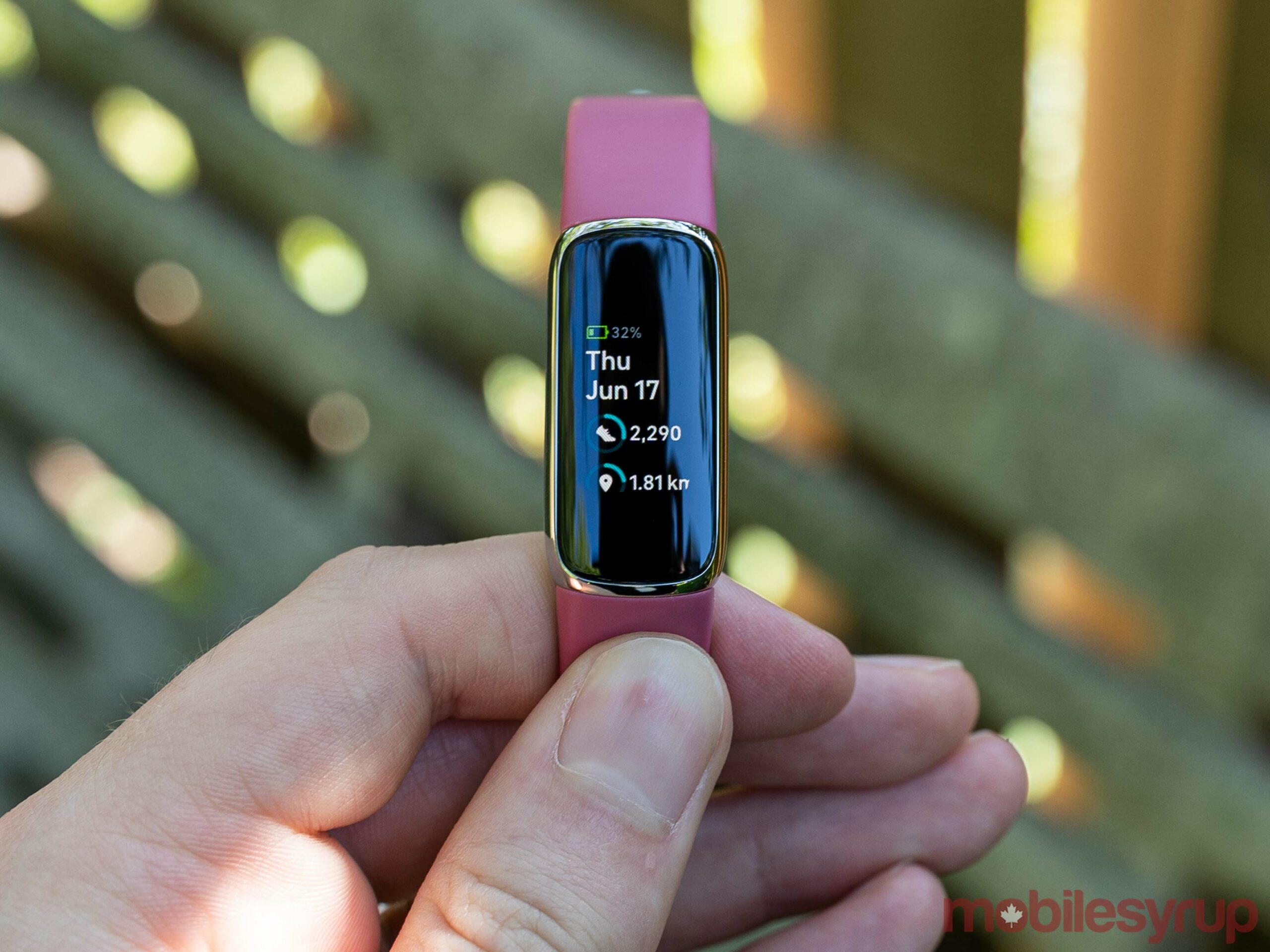
Some of the wellness tools Fitbit introduced on the Sense smartwatch also appear on the Luxe. That includes stress management tools that track physical signs of stress and delivers a stress score between one and 100 in the Fitbit app. There are also ‘Mindful Minutes’ and ‘Guided Breathing,’ features that can help users take a few moments to relax and reflect.
Finally, swinging back around to the health features, the Luxe supports real-time pace and distance measuring, but requires your smartphone’s GPS to do it.
A few notable omissions

Fitbit Luxe and Charge 4.
That brings us to probably the biggest omission with the Luxe: on-wrist GPS. Having GPS built-in to the device, like it is with the Charge 4 and Fitbit Sense smartwatch, means users don’t need to bring their phone when they go on a run to track their pace and distance. Since I’m not much of a runner, built-in GPS isn’t a major loss for me, but that won’t hold true for others. (It’s worth noting that the Fitbit Inspire 2 also doesn’t have built-in GPS, but it’s significantly cheaper than the Luxe.)
Another notable difference between the Luxe and Charge 4 includes stair tracking — the Luxe can’t measure how many floors you climb. The Luxe also lacks a few other features, like ‘Spotify Connect’ for controlling music playback and payments through Fitbit Pay.
“While the Luxe is a capable device, navigating it to access most of these features can be frustrating.”
While comparing the Luxe with the Charge 4, it’s worth noting that there are a few features the Luxe offers that aren’t available on the Charge. Namely, the Luxe has a colour display, while the Charge 4 only has a monochrome screen. Luxe also supports Google’s Fast Pair system to improve the set-up process. Battery life is also different, but we’ll get into that more below.
A tracker with smarts
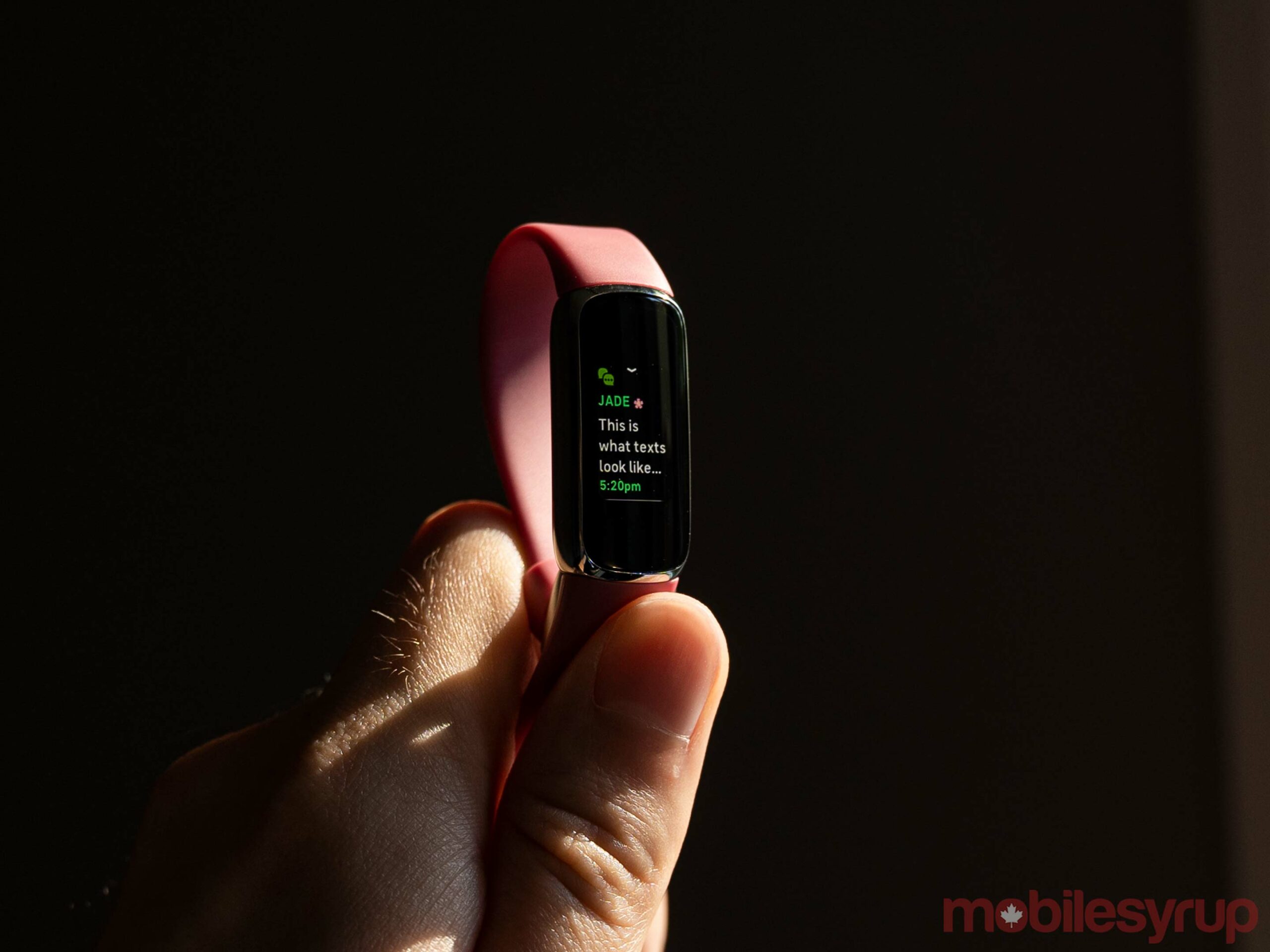
Fitbit’s Luxe tracker has a few smart features as well, although these mostly exist in some way on the Charge 4 and other Fitbit trackers.
The Luxe can display call, text and other smartphone notifications on your wrist. You can mark texts as read, or reply with a set of quick responses or emojis. Alternatively, you can have the Luxe remind you about a message in an hour or tap ‘open’ to open the text on your phone. It’s not quite as effective as Fitbit’s smartwatches, which let you reply to messages with voice, but it can come in handy in a pinch. Users can also enable a ‘Do Not Disturb’ mode to silence incoming notifications.
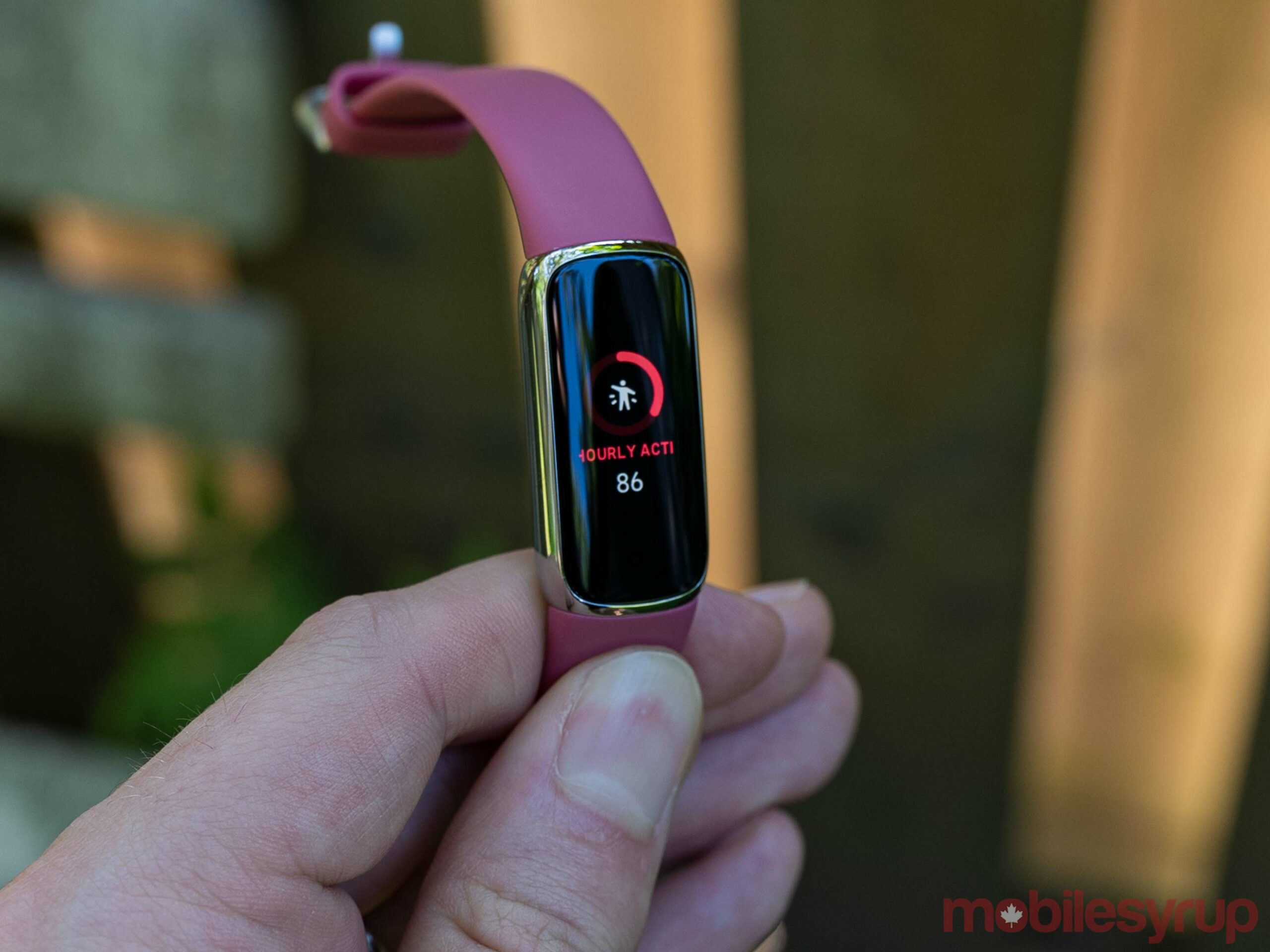
Likewise, Luxe offers a Sleep Mode to mute incoming notifications at night and prevent the screen from turning on. I’ve had issues with Sleep Mode being inconsistent on previous Fitbit trackers, but in my time with the Luxe there was only one instance when the tracker screen lit up at night and disturbed me.
Finally, the Luxe can handle basic watch tasks like alarms, timer and stopwatch functionality.
None of these features are revolutionary, but it’s convenient to have access to them when I occasionally need them.
Unfortunately, accessing these features can be frustrating

While the Luxe is a capable device, navigating it to access most of these features can be frustrating. Fitbit departed from its typical tracker navigation system with the Luxe, opting instead for a series of swipes and gestures that, in my experience, were mostly inconsistent.
For example, the Charge 4 and Inspire 2 trackers both feature a side button for navigation — button here refers to an inductive notch on the side of the tracker. It’s not a traditional button, but it accomplishes the same function without any moving parts.
That button can light up the trackers’ displays and acts as a consistent way to navigate back to the previous screen when navigating the tracker. The Luxe, however, does away with the button in favour of swipe gestures to navigate around and a double-tap to return to the main screen.
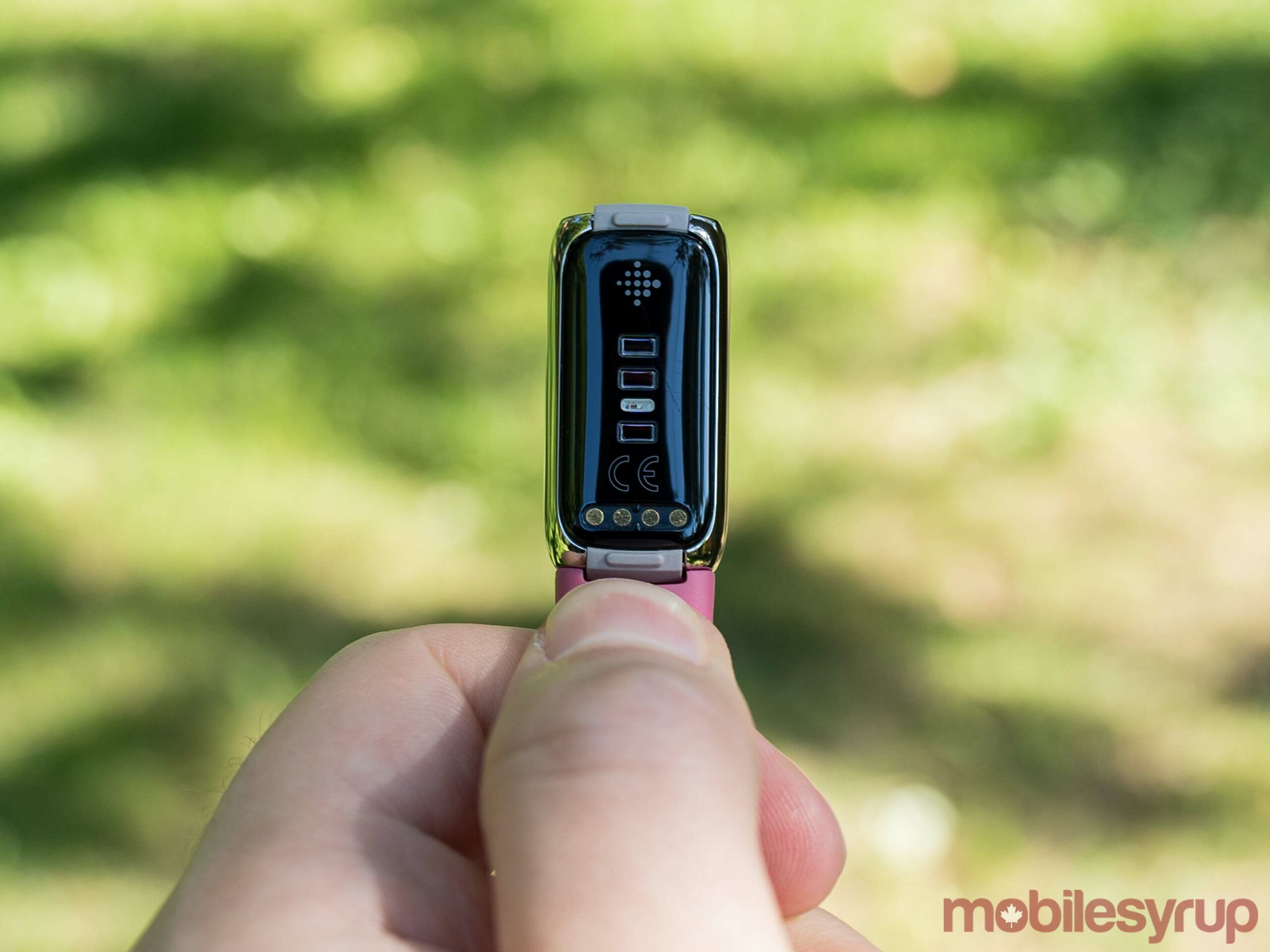
For the most part, swiping around worked, but sometimes it felt like the Luxe wasn’t responsive to touch input. It’d take a little longer than expected to register a swipe, or sometimes not register one at all. Plus, I found the small size of the screen made it harder to navigate using only gestures.
To be clear, the Luxe generally worked fine — I just had the occasional difficulty navigating a tiny screen entirely with swipe inputs. If Fitbit puts out a Luxe 2 in the future, I’d love to see the inductive button come back, or another type of navigation that feels more reliable than straight touch. I imagine my problems would be lessened on a larger display with more area for me to touch, but that would mean making the Luxe quite a bit bigger, which isn’t ideal.
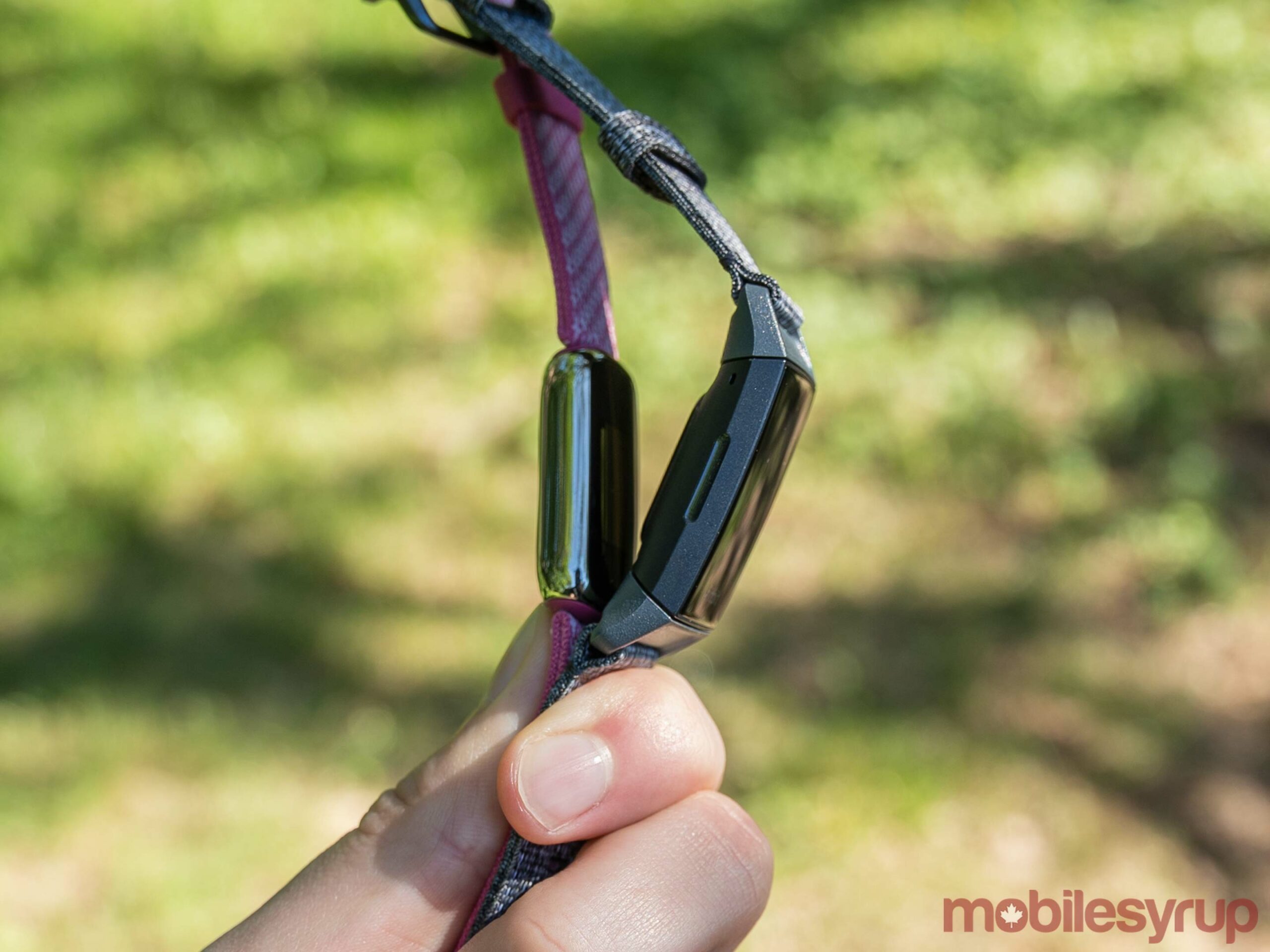
The Fitbit Luxe doesn’t have the side button seen on the Charge 4 and other trackers
I also don’t think this is an issue unique to the Luxe. Several companies have added alternate navigation methods to smartwatches — for example, the Apple Watch’s Digital Crown lets you scroll through content on the watch without touching the screen, and some Samsung watches have a rotating dial for scrolling through apps. In fact, the Samsung Galaxy Watch Active 2 featured a touch-sensitive bezel that people could use to navigate the watch.
That’s not to say Fitbit should launch a Luxe 2 sporting a Digital Crown or special touch bezel, but I do think adding an alternate method of navigating the tracker, or even just a larger touch area on the face, would make it easier to use.
Battery life is all right, but far from the best
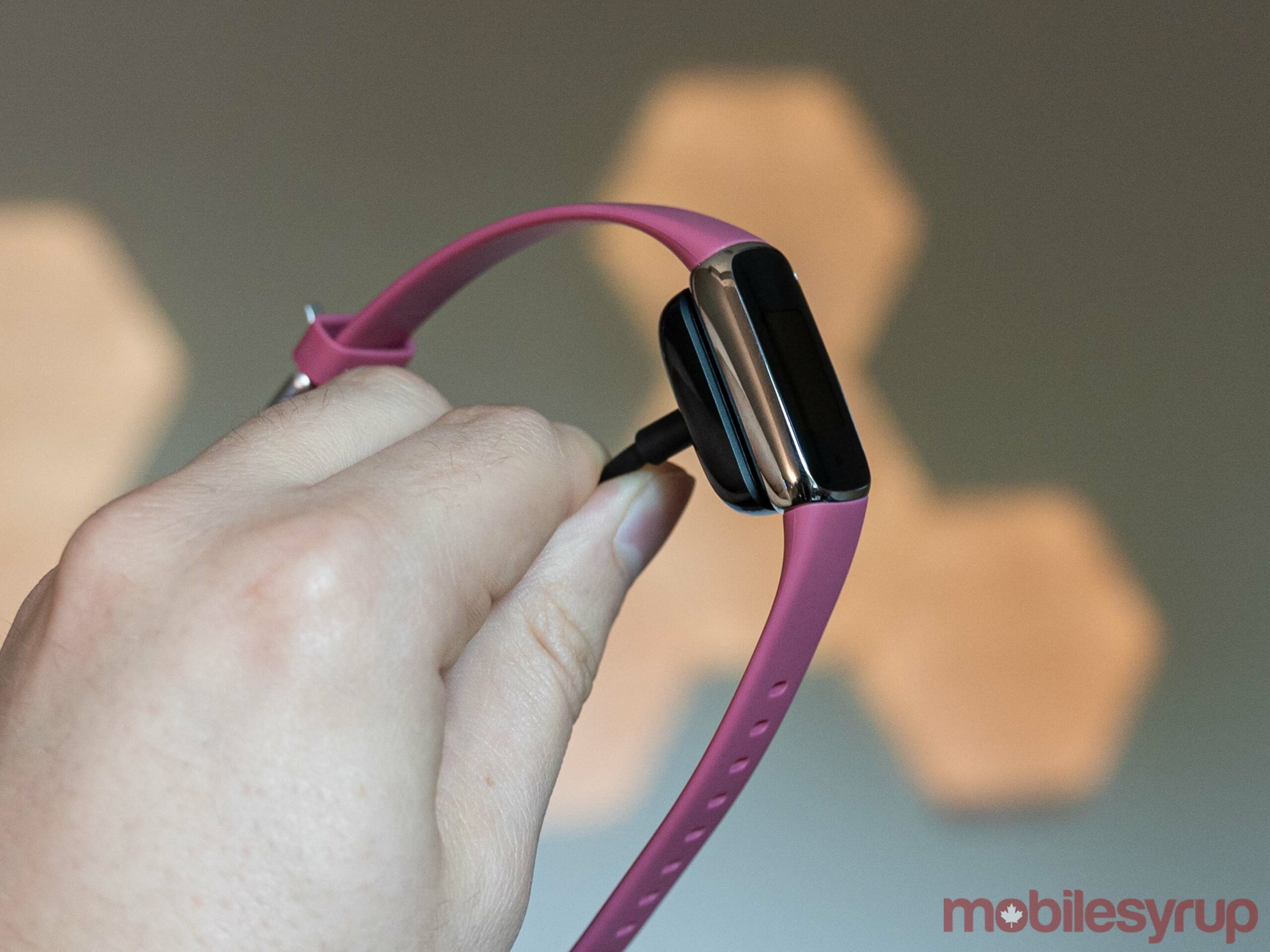
Fitbit advertises a five-day battery life for the Fitbit Luxe, which is less than the seven-day battery life of the Charge 4 and half as long as the Inspire 2 can last. However, in my own testing, the Luxe made it through six days with about 45 percent battery remaining.
At the time of writing, I hadn’t had the Luxe on and active long enough to fully deplete the battery, so I’ll note my initial impressions and once I’ve spent more time with it, I’ll update this section with more detail.
With the Luxe set to default settings — normal brightness, auto screen wake and the default screen timeout, the tracker has outlasted Fitbit’s battery estimates. At the same time, I also haven’t done many activities that would be harder on the Luxe.

For example, using the Luxe to track a full run or workout would likely have a bigger impact on battery life, as would having notifications enabled (aside from testing them, I kept notifications turned off since I prefer not to have my wrist buzz every time I get a text).
While different display settings and more intense workout regimens may deplete the Luxe’s battery faster, I think most average users who run the Luxe with default settings won’t have any issues getting the tracker to last them a full week.
And, when you do need to charge the Luxe, you can connect it with a lovely little magnetic charging pad that’s miles better than the awful plastic clip connector seen on other Fitbit trackers like the Charge 4.
The best looking tracker yet
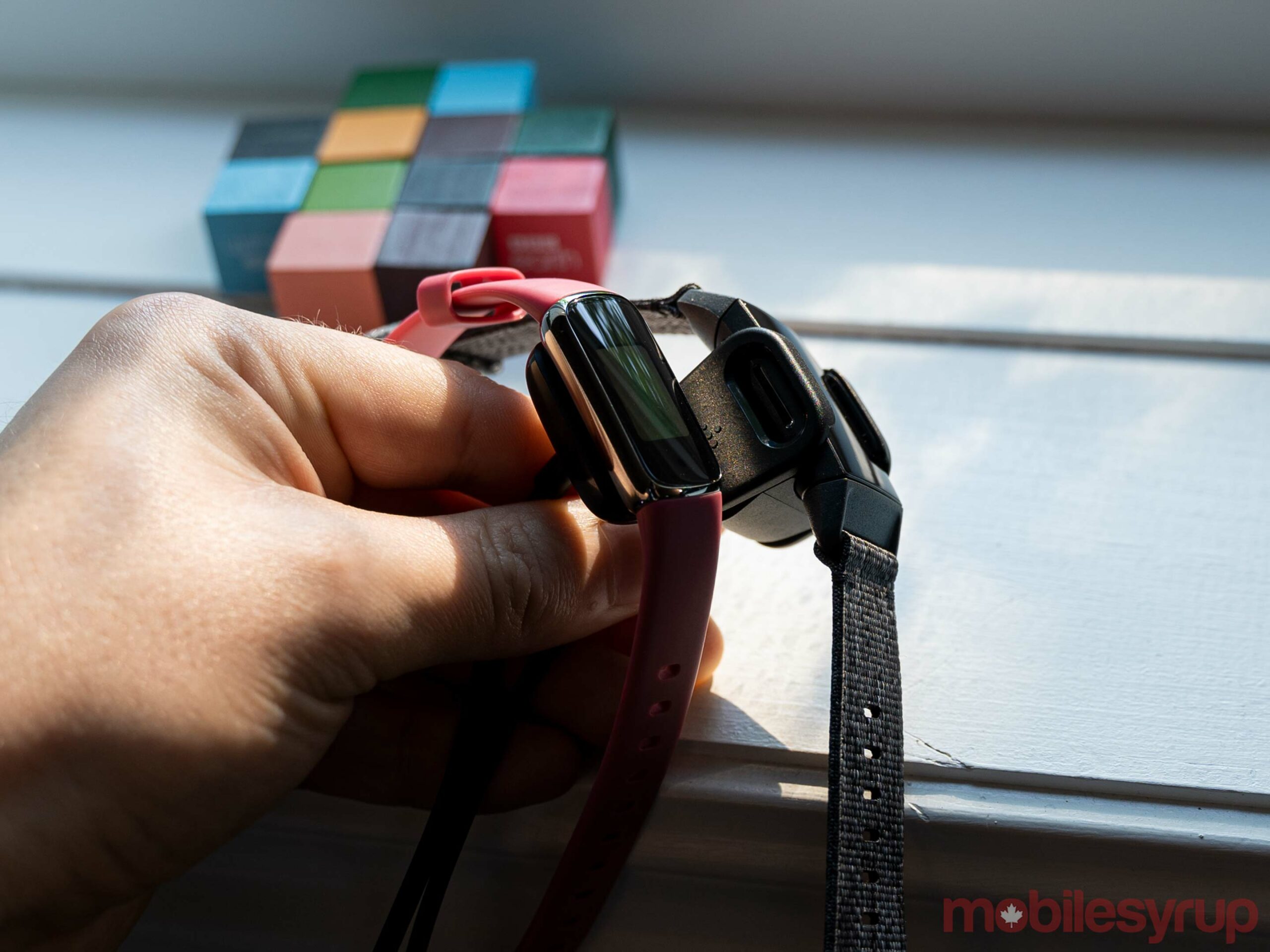
Fitbit Luxe and Charge 4 chargers.
Finally, I want to spend some time talking about the actual design of the Fitbit Luxe. I saved this portion for the end since I think the aesthetics aren’t necessarily as important as the function of the device, but that’s not to say they aren’t important.
With that said, the Fitbit Luxe is easily the best looking Fitbit tracker yet. I’m not sure I’d put it ahead of Fibit’s smartwatches — I really like the look of the Sense — but when stacked up against the other Fitbit trackers, the Luxe is the clear winner.
Fitbit’s other trackers offered functional designs, but they were never something I felt I could wear to a nice event. To me, they always came off as tacky and were clearly some kind of tech gizmo strapped to my wrist with silicon and little regard for style.
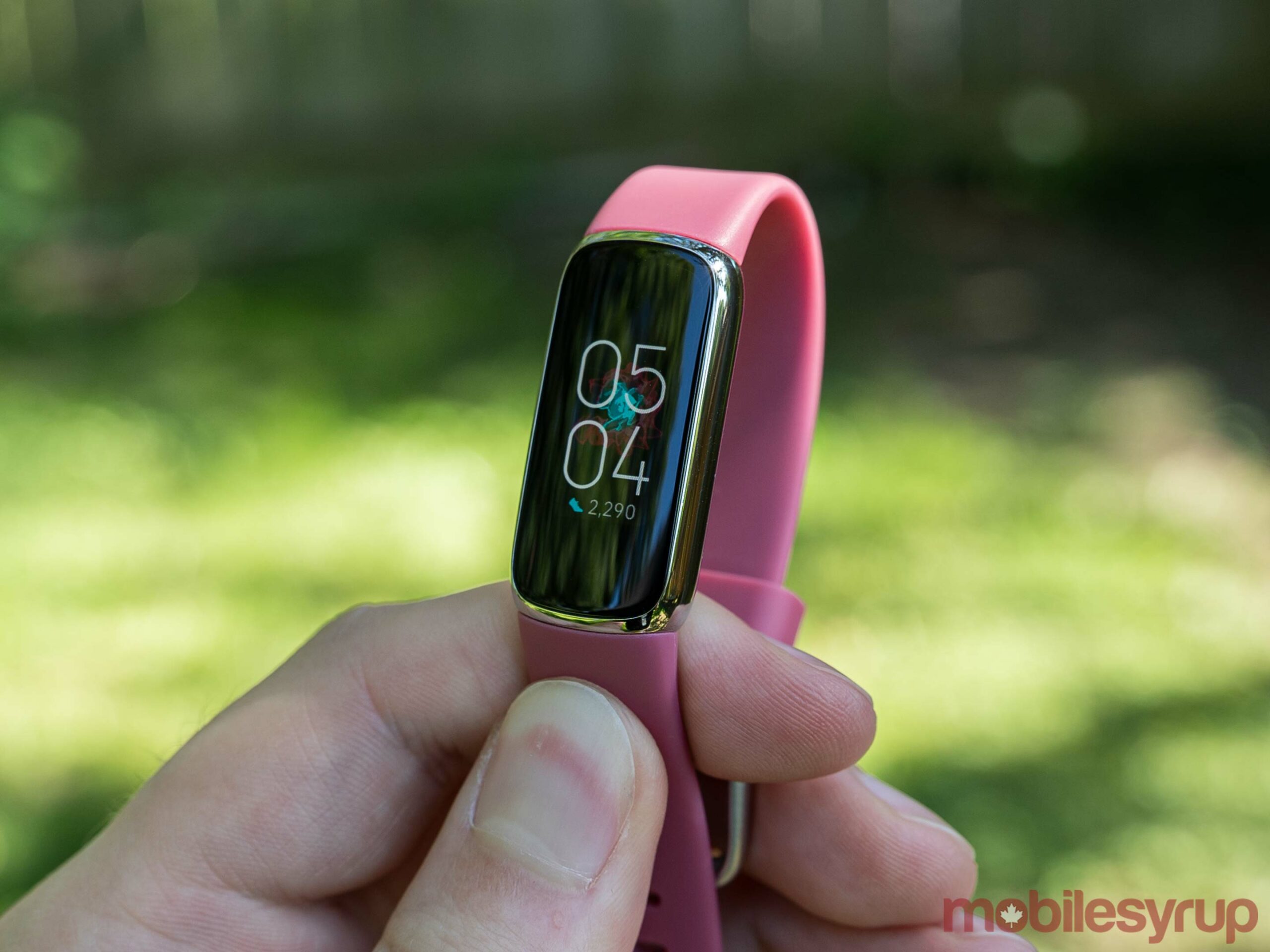
The Luxe, on the other hand, is pretty yet subtle. It sports a nice stainless steel frame and glass front panel that looks svelte. It’s not garish either, and doesn’t stand out as a tech product. At a glance, the Luxe looks like maybe a nice bracelet or an odd watch, but doesn’t seem out of place like other trackers.
The frame is available in three colours — ‘Soft Gold,’ ‘Graphite’ and ‘Platinum,’ each with a respective band colour: ‘Lunar White,’ ‘Black’ and ‘Orchid.’ The Luxe I reviewed had the ‘Platinum’ frame and ‘Orchid’ band and I quite liked the colour. While the Platinum/Orchid combo is I think the best of the three options, I’d probably swap the Orchid band for a more neutral colour like black or grey (my wife, however, is a big fan of the Orchid band).
Thankfully, the bands are super easy to swap out, so it wouldn’t be hard to get a nice collection of bands that fit with different wardrobes or styles.

It’s also worth noting that the Luxe offers a colour display instead of the monochrome options available on Fitbit’s other trackers. Functionally, the colours don’t add much, but it does look nicer. My only real complaint with the display is it only occupies a tiny portion of the tracker’s face. The rest of the Luxe’s face is comprised of bezel designed to look like more screen. Once you see through that ruse, however, the Luxe seems a little less ‘luxe-urious.’
Fitbit Luxe is a great looking fitness tracker for the average person
Ultimately, I think the Fitbit Luxe falls into a pretty great segment and offers up a decent balance of features that set it apart from the rest of Fitbit’s trackers. At $199.95 for the Luxe, it’s a bit pricier than the company’s other trackers. At the time of writing, some of the other trackers were on sale, making price comparisons a little harder.
I think for most potential Fitbit Luxe customers, the choice comes down to preferences about style and function. The Charge 4 tracker offers more function than the Luxe at a lower price of $130, or $150 for the Special Edition (regularly priced at $170 and $190 respectively). However, the Charge 4 isn’t nearly as pretty.
If all you care about is fitness tracking, I think the Charge 4 makes more sense. Anyone that wants tracking but also a stylish wrist ornament will probably prefer the Luxe. And, as a final note, the Inspire 2 clocks in at $130 as well in Canada, so I don’t see much reason to get it when you could get the Charge 4 for the same price with better features.
At the same time, those who want a smarter device could consider one of Fitbit’s smartwatches. The older Versa 2 was available for about $180 (normally $230) while the Versa 3 was on sale for $260 (normally $300) and the Sense was $330 (normally $400).
Regardless which way you choose to go, the Fitbit Luxe is, I think, well-positioned in terms of both features and design. If you care about design, it’s the way to go -- if function is your goal, you can pay a little more for a smartwatch with more capabilities or a little less for a fitness tracker with better tracking features.
The Fitbit Luxe starts at $199.95 in Canada and is available on Fitbit’s website and at other retail locations.
"If you care about design, the Fitbit Luxe is the way to go -- if function is your goal, Fitbit's smartwatches and Charge trackers are better options."
MobileSyrup may earn a commission from purchases made via our links, which helps fund the journalism we provide free on our website. These links do not influence our editorial content. Support us here.


